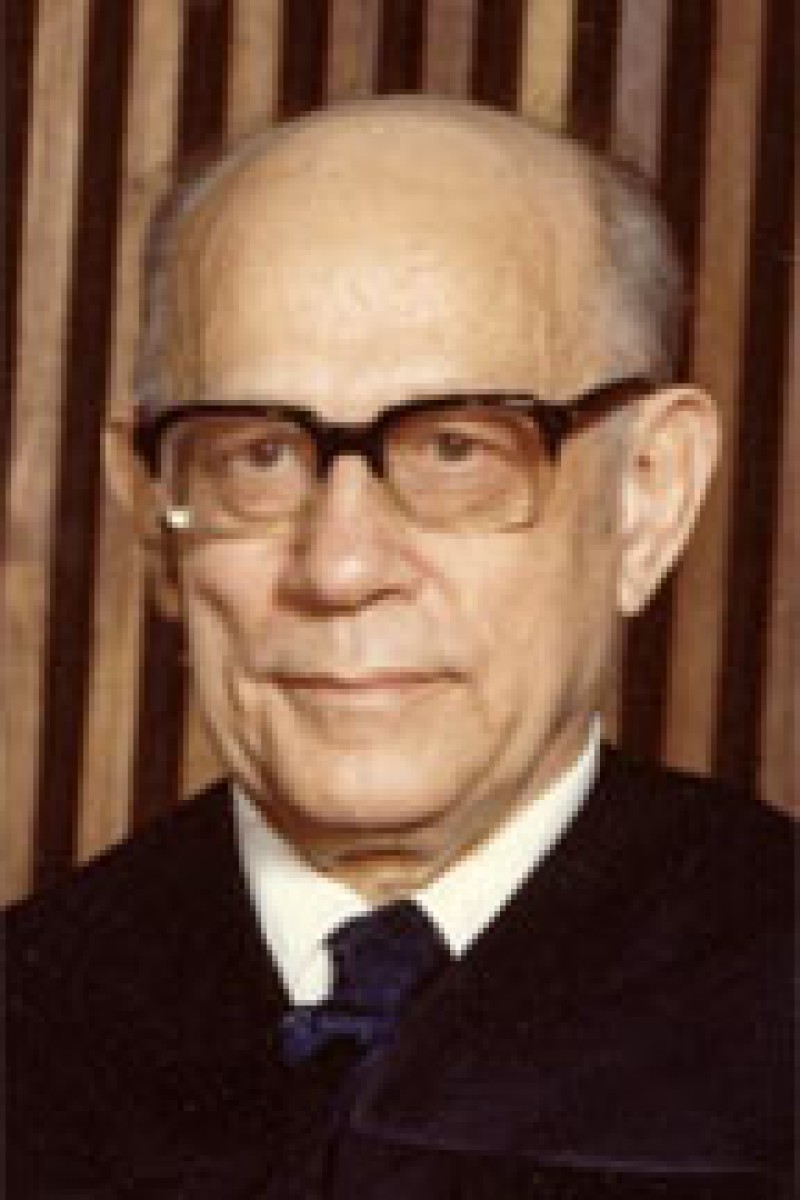Clifford Francis Brown
Clifford Francis Brown led a varied and lengthy career in the Ohio judiciary. During the course of 28 years, he served on the bench at the common pleas, appellate and Supreme Court levels.
Brown was born Jan. 21, 1916, in Huron County, Ohio, to Ignatius A. and Minnie R. Brown. He entered Notre Dame University at age 16, where he received a bachelor’s degree in 1936. In 1938, at age 22, he received a law degree from Notre Dame University. After passing the Ohio bar exam in 1938, Brown returned to Norwalk, where he entered the private practice of law. He provided legal services in the community from 1938 to 1964. World War II interrupted his legal practice when Brown served in the U.S. Army from 1943 to 1946, where he worked as a legal clerk.
In 1957, the Ohio General Assembly created a new system of county courts whose territorial jurisdiction lay within a county’s geographic boundaries, but excluded areas served by municipal courts. These courts handled minor civil and criminal proceedings, and their judges were elected for four-year terms (the first group of judges were elected in a special election for a one-year term). Brown was elected in 1957 and re-elected in 1958 and 1962.
In 1964, Brown was elected to the Sixth District Court of Appeals and re-elected in 1970 and 1976. In 1976, his fellow judges honored him by electing him chief justice of the Ohio Court of Appeals Judges Association.
Brown sought election to the Supreme Court of Ohio in 1966, 1974 and 1978, but he was unsuccessful. In 1980, he achieved his goal by defeating Fifth District Court of Appeals of Ohio Judge David D. Dowd Jr. Brown turned 70 in 1986, reaching the mandatory retirement age and he was barred from seeking re-election.
Brown was passionate about workers’ compensation issues and believed these laws exist to ensure injured workers have access to adequate medical care and compensation. Brown felt that circumstances and procedures should not unduly burden injured workers, and, like other legal proceedings, there should be an appeal process open to all claimants.
In State ex rel. Thompson v. Fenix & Scisson, Inc. in 1985, the Ohio Industrial Commission denied permanent total disability benefits to James Thompson. He requested benefits for two conditions: back pain and psychiatric illness. Two doctors examined him, one for his psychiatric condition and another for his physical condition. The commission did not evaluate the combined effect of the two medical conditions to determine if he was permanently disabled. Brown wrote the Supreme Court’s majority opinion, which overturned the “some evidence” rule. This rule stated that courts could not change decisions of the Ohio Industrial Commission about the extent of a worker’s injuries if “some evidence” existed to support the commission’s determination. The Supreme Court ruled that the Industrial Commission abused its discretion in this case and directed the Industrial Commission to find Thompson permanently and totally disabled.
Brown finished his term on Dec. 31, 1986. He returned with his wife, Katherine, to Norwalk. Katherine Brown died in 1992. The couple had five children: Ann Brown Playko, Margaret Brown Kramb, Sheila Brown, Stephen (deceased in 1961) and Charles Brown.

136th Justice of the Supreme Court of Ohio
TERM
Jan 1, 1981
to Jan 1, 1987
